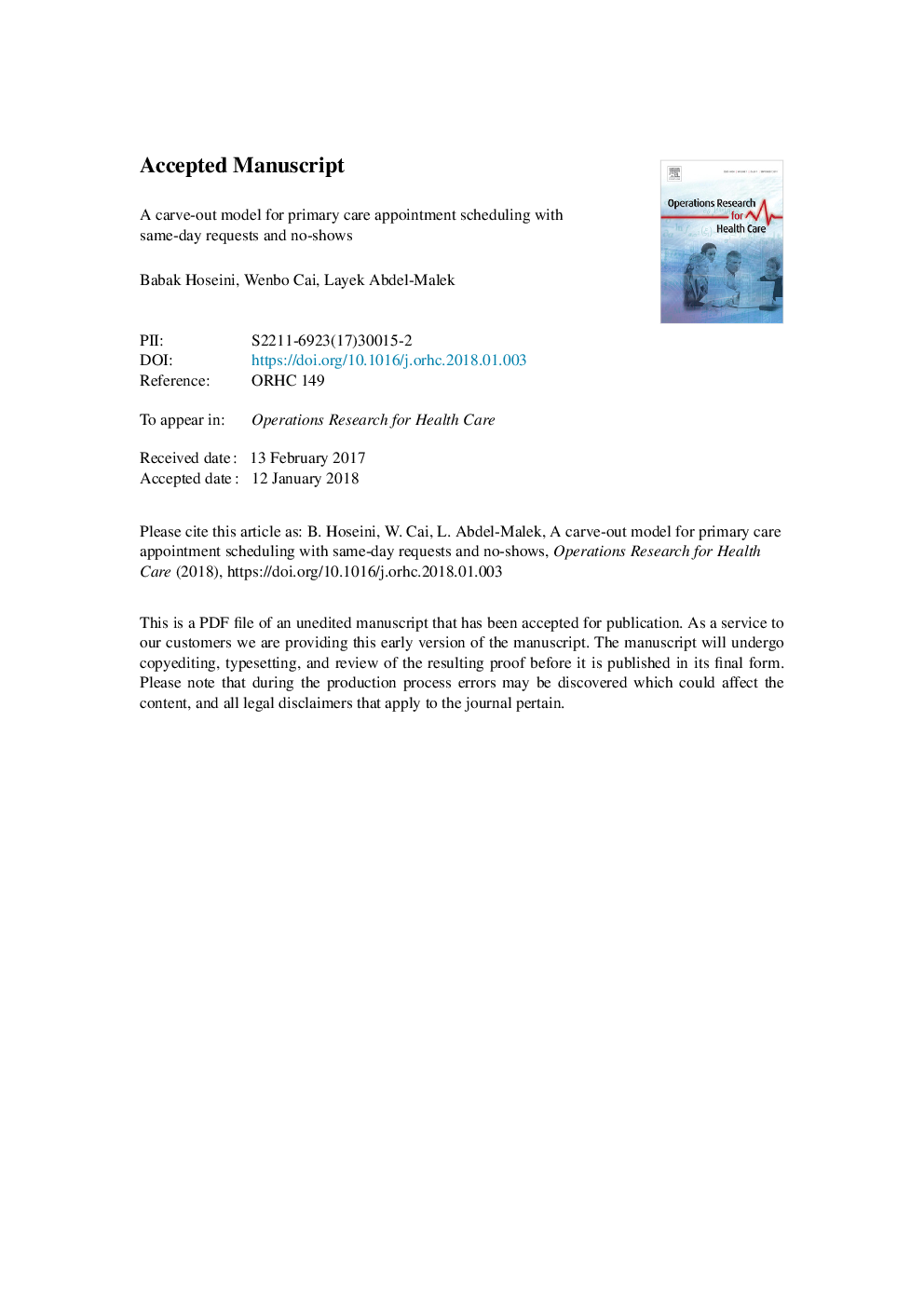| Article ID | Journal | Published Year | Pages | File Type |
|---|---|---|---|---|
| 7543559 | Operations Research for Health Care | 2018 | 46 Pages |
Abstract
We develop a stochastic model for a carve-out appointment system for a single physician in a primary care facility that allocates certain slots for same-day requests while reserving the rest for appointments requested in advance. Several slots are double-booked to mitigate the negative impacts from no-shows. Our model takes into account the stochastic demands of both routine patients and same-day requests as well as no-shows and optimizes the overall system performance, which includes the primary care provider's utility and patients' waiting time. We derive the optimal number of open slots, the maximum number of patients allowed to be double-booked, and where these open slots and double-booked slots should be placed. A key contribution of our approach is that both capacity decisions and scheduling decisions are obtained simultaneously. Moreover, our approach allows the optimal schedules to be analytically characterized by the demand distribution of same-day requests, the no-show rate, and the ratio of overtime cost to waiting cost for the special case where it is optimal to leave one open slot and one double-booked slot. Numerical results are used for more general cases to provide managerial insights on the usage of open slots and double-booked slots. The optimal schedule should start with a few open slots. If the no-show rate is low, single-booked slots should be placed before the first double-booked slots. On the other hand, if the no-show rate is high, a double-booked slot should be placed immediately after the series of open slots. Additional open slots should be inserted either between two double-booked slots or between one double-booked slot and a series of single-booked slots. The strategic placement of open slots not only increases the physician's utilization but also improves patients' aggregated waiting time.
Related Topics
Health Sciences
Medicine and Dentistry
Public Health and Health Policy
Authors
Babak Hoseini, Wenbo Cai, Layek Abdel-Malek,
